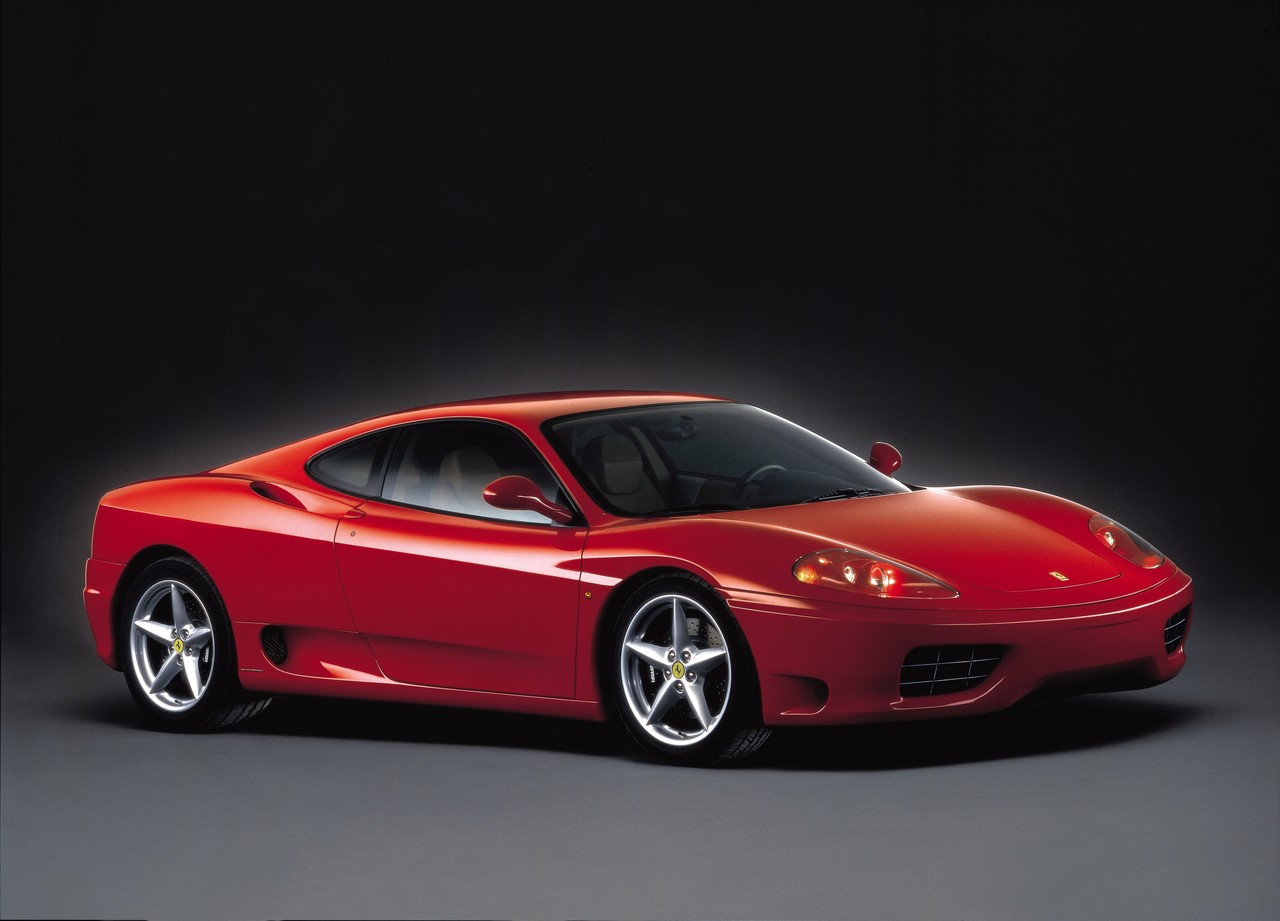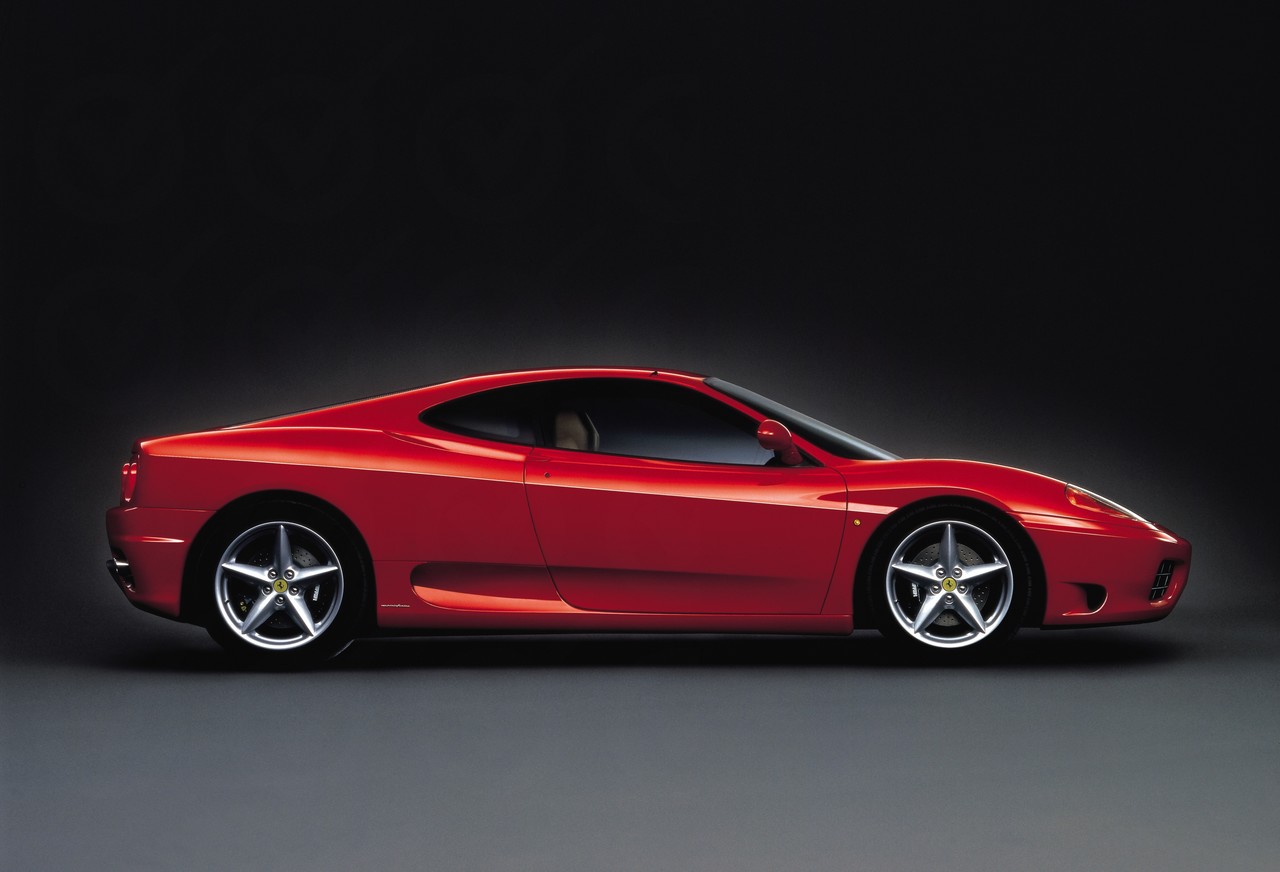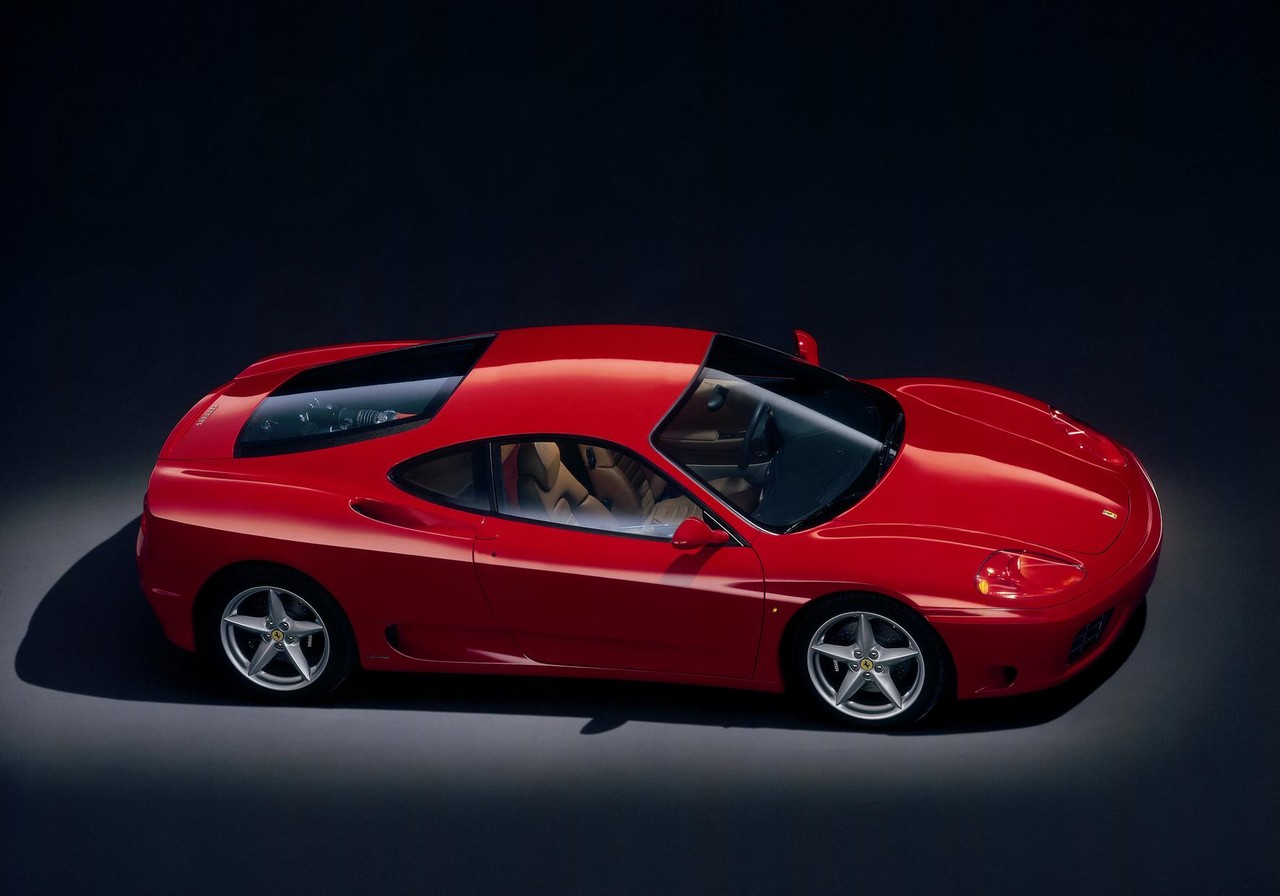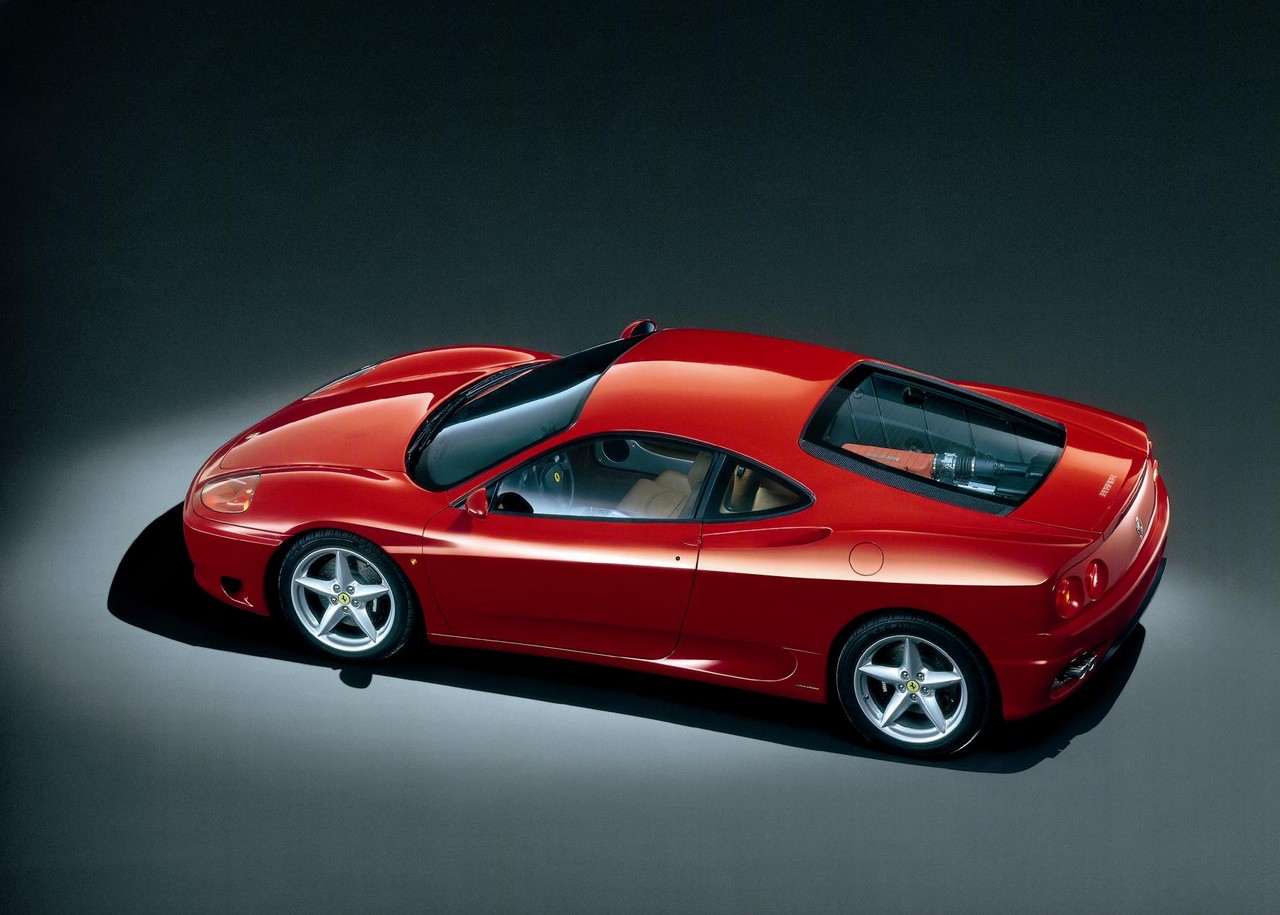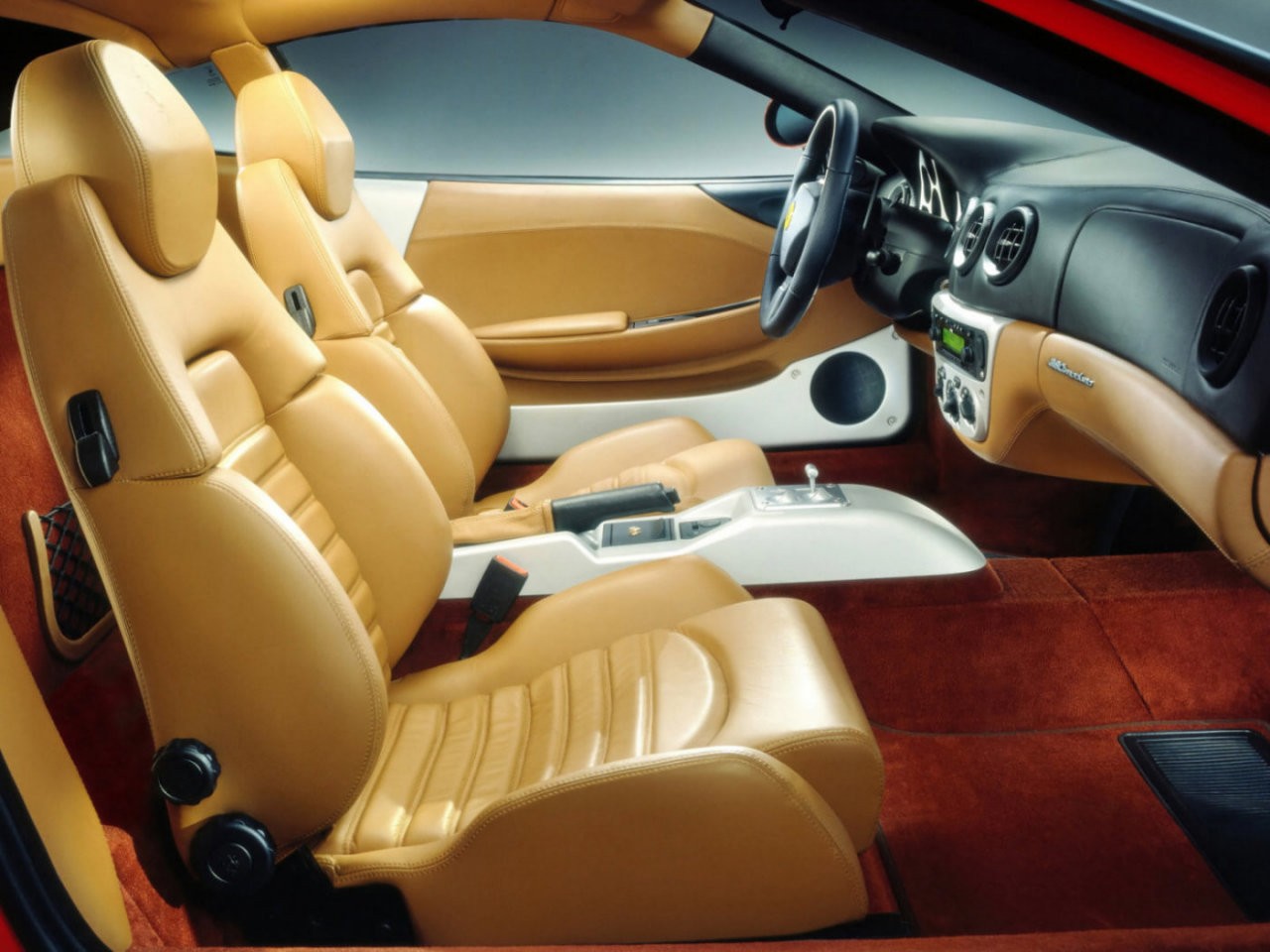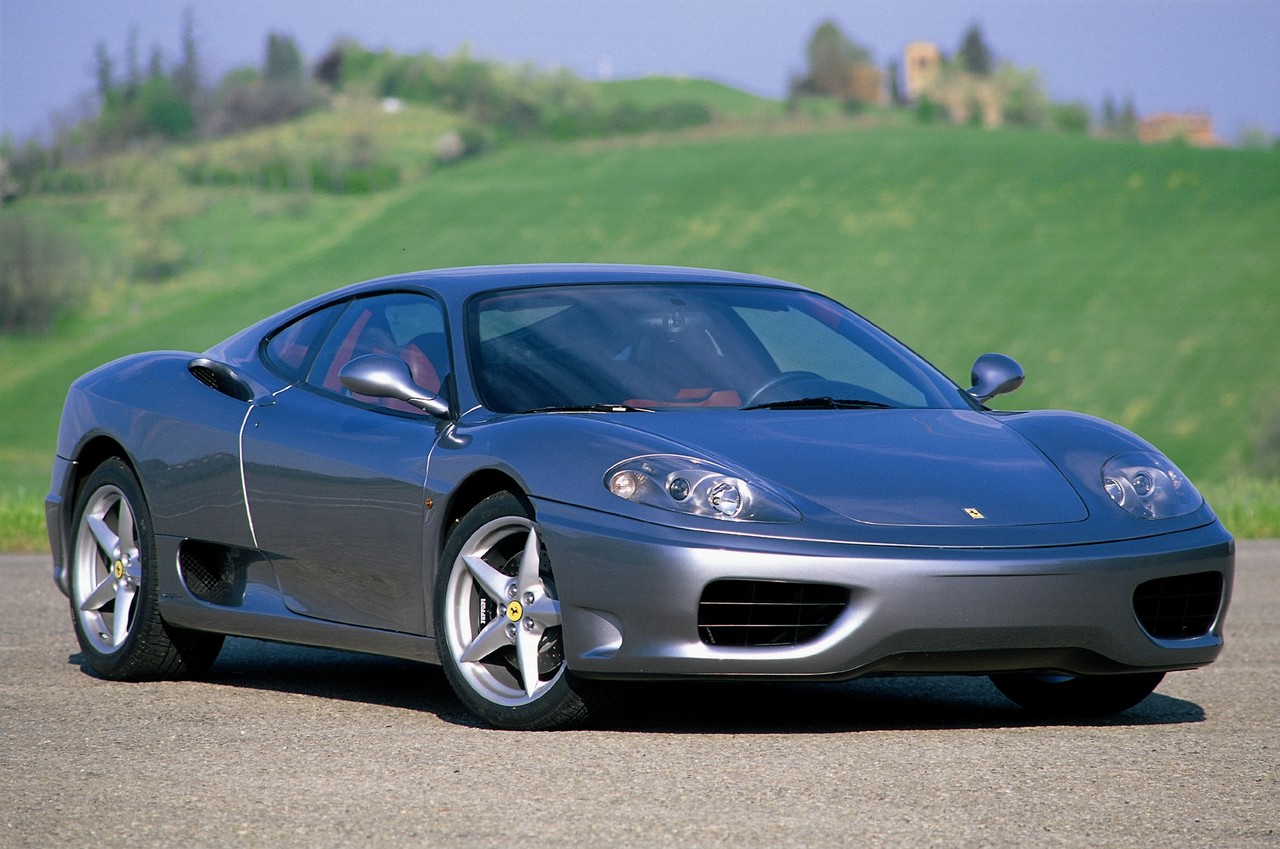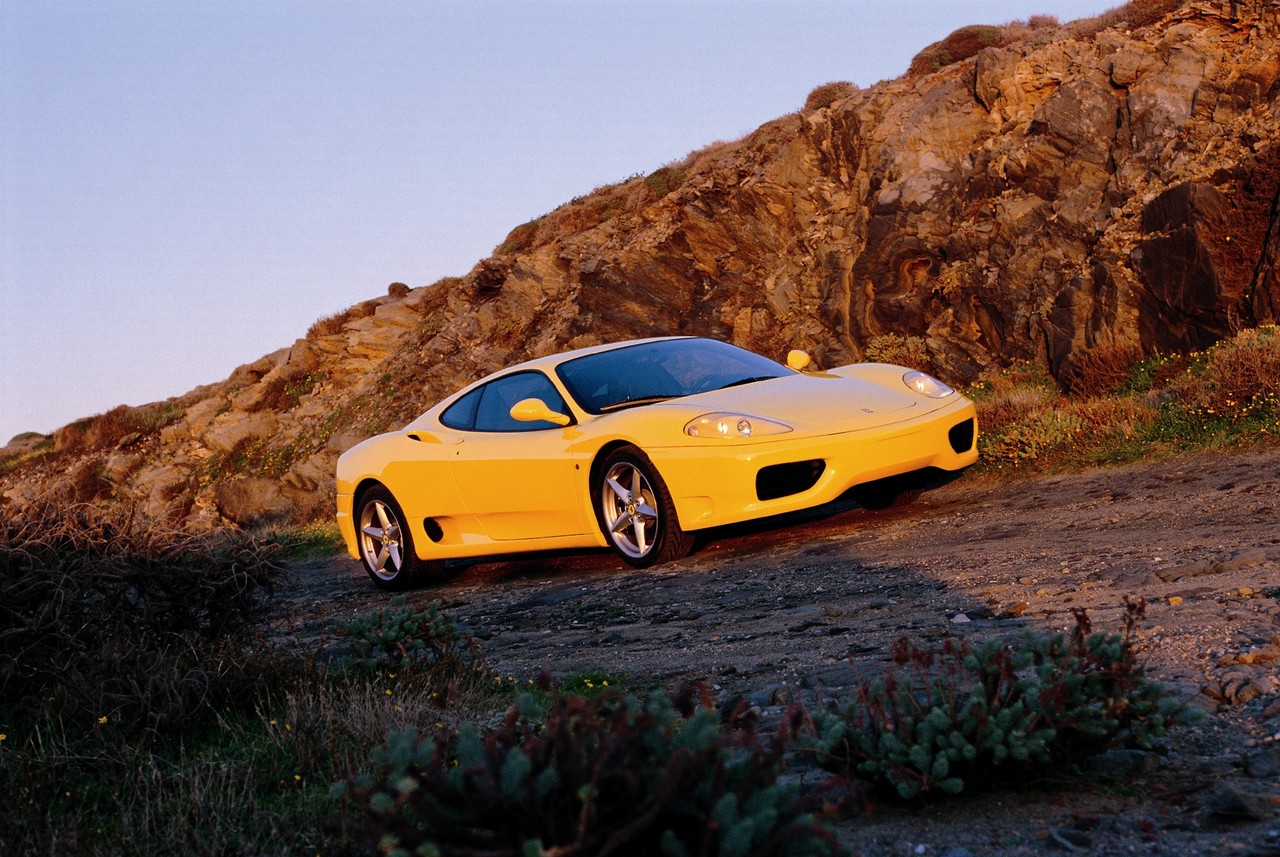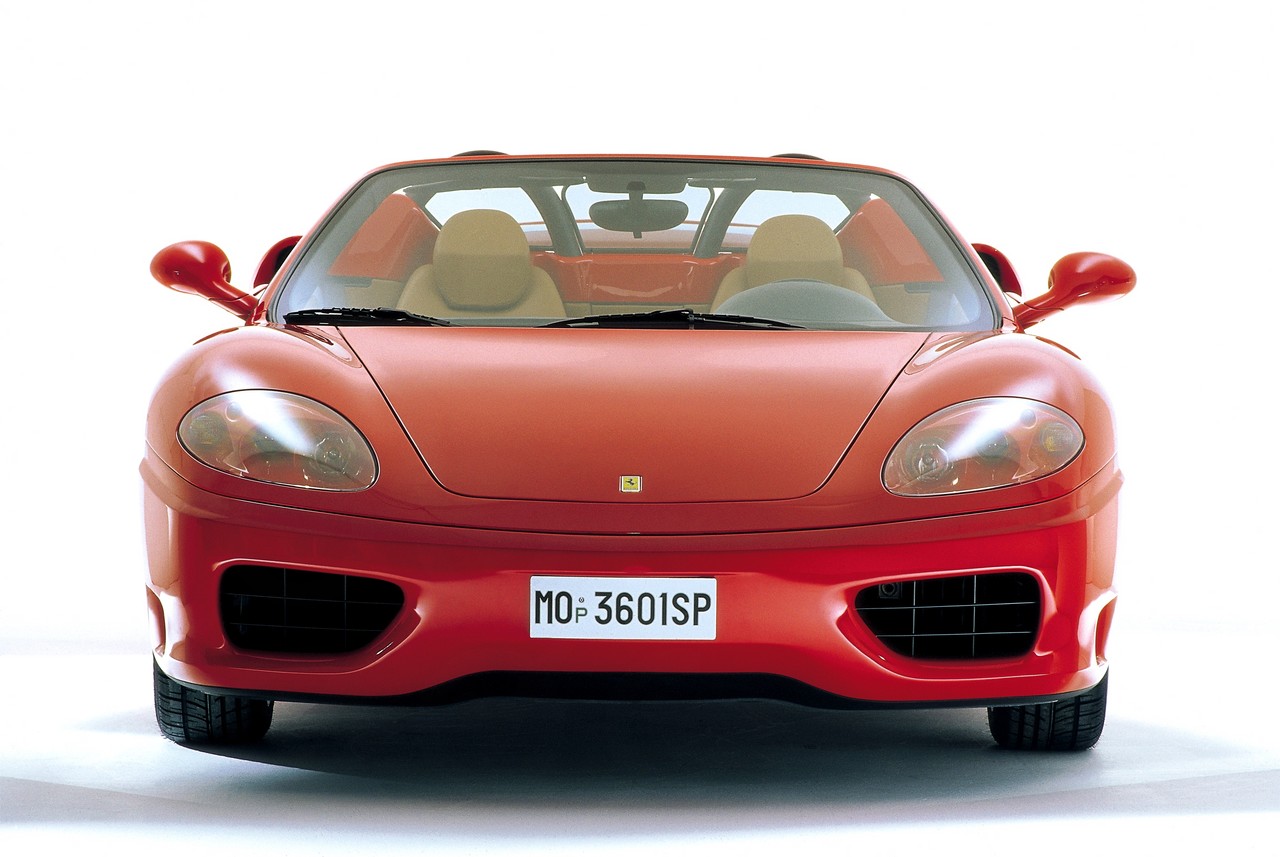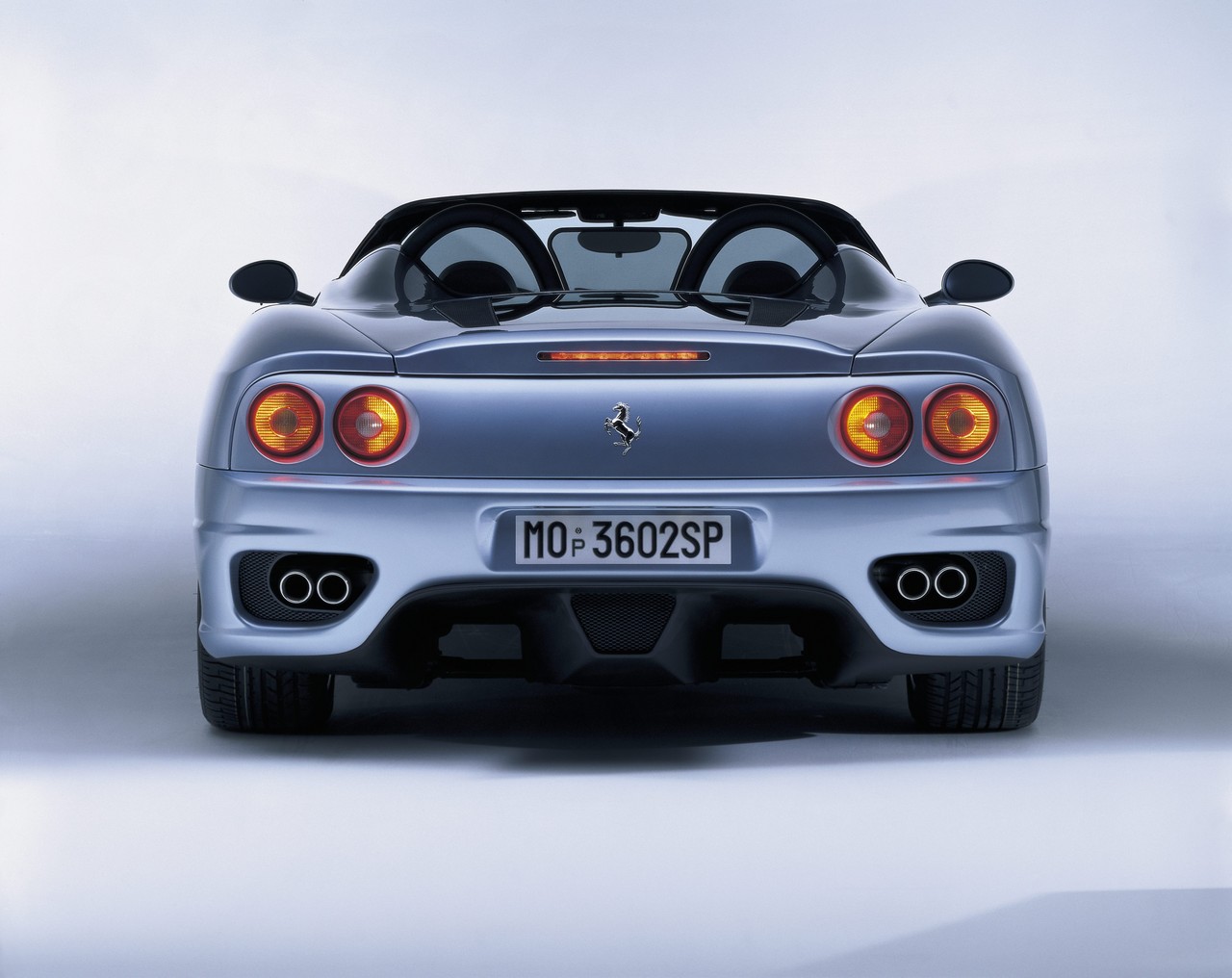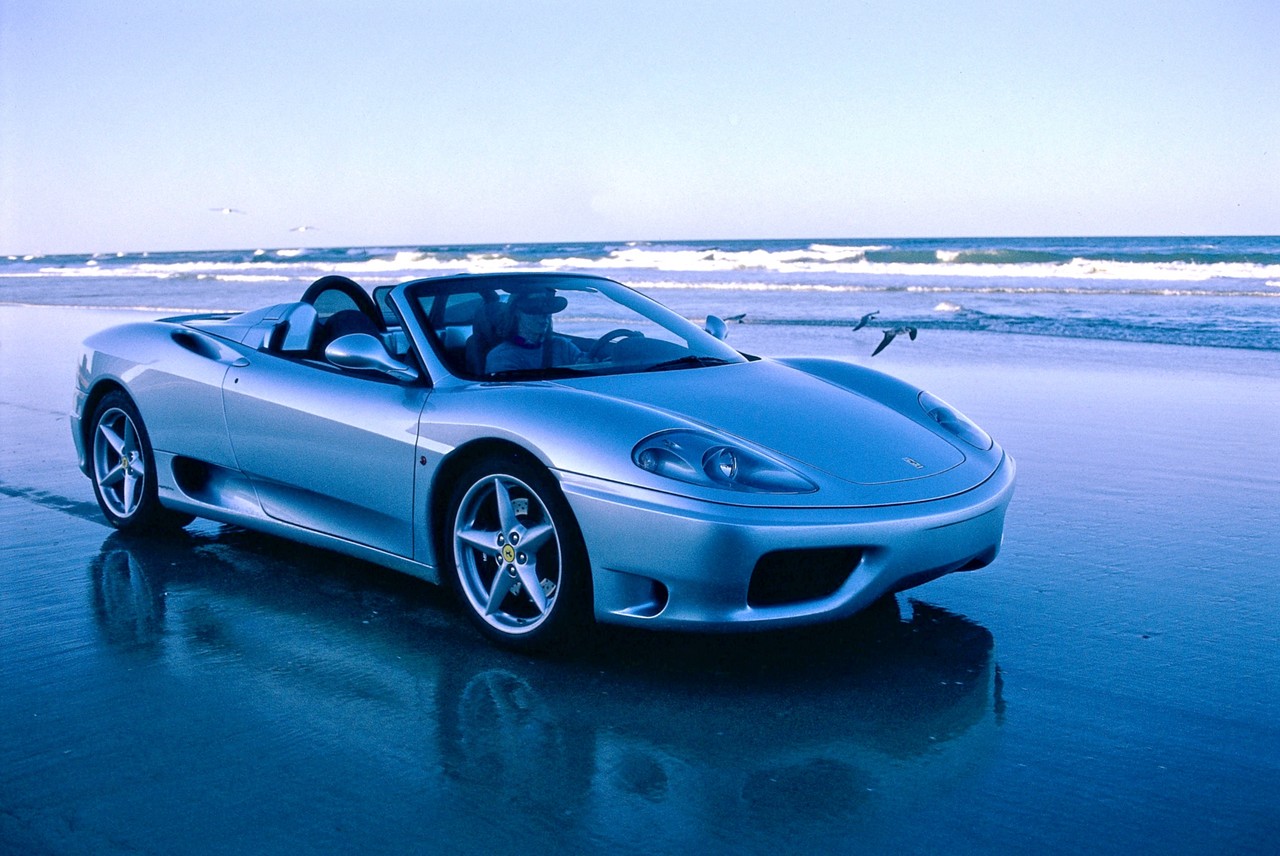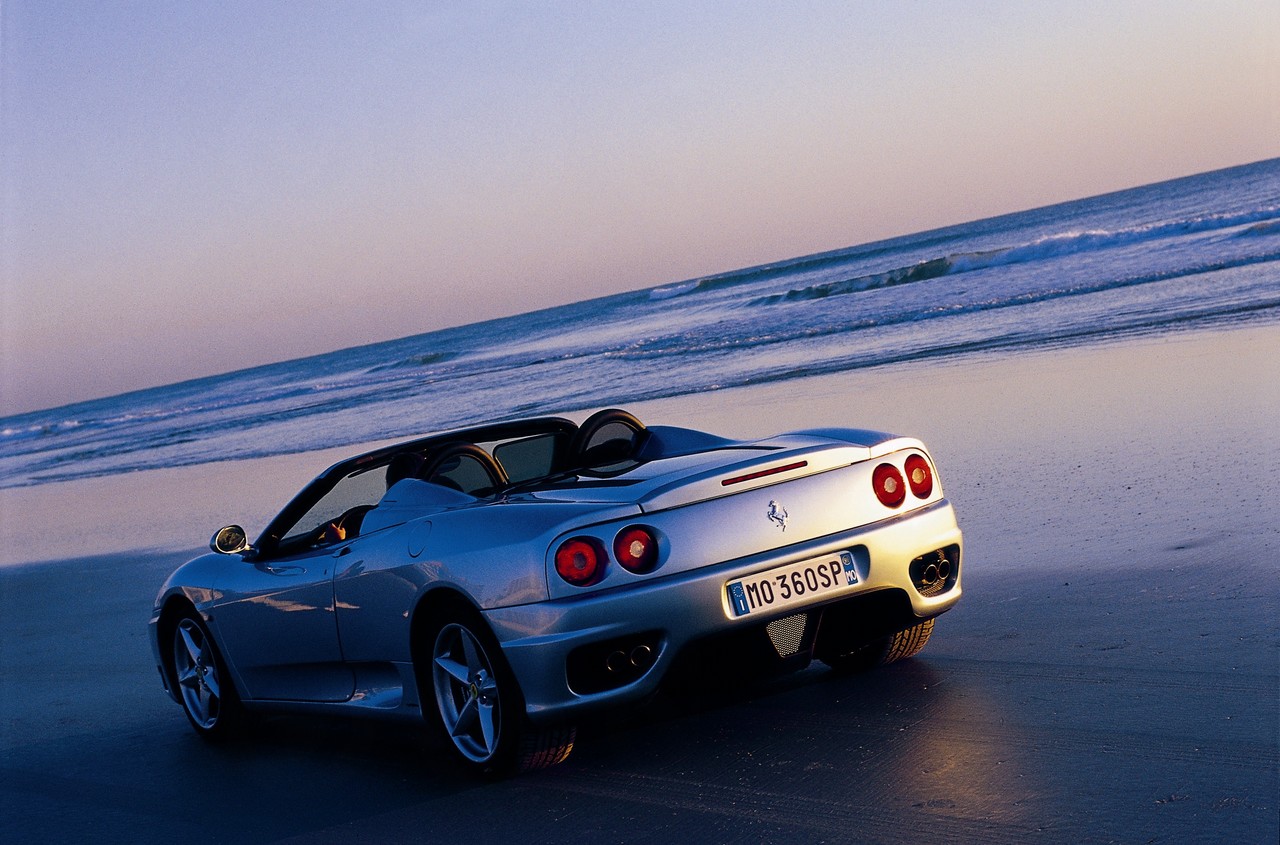
- Free-revving 3.6-litre V8 engine performs and sounds great
- Balanced chassis and excellent dynamics
- Accurate steering provides great feel
- High maintenance costs
- F1 transmission can provide jerky shifts in automatic mode
- Cheap interior carpets
Review: Ferrari 360 (1999-05)
Overview
Released in August 1999, the Ferrari 360 was a mid-engined, rear-wheel drive sports car. Manufactured in Maranello, Italy, the 360 was powered by a 3.6-litre V8 petrol engine that was mated to either a six-speed manual or semi-automatic ‘F1’ transmission. Initially available as a two-door Modena coupe, a Spider (convertible) followed in December 2000.
The 3.6-litre V8 petrol engine had double overhead camshafts per cylinder bank, five valves per cylinder, a flat plane crankshaft, titanium connecting rods, dry-sump lubrication and a compression ratio of 11.0:1. Furthermore, the F1 transmission was controlled by steering wheel gearshift paddles (i.e. there was no clutch pedal) which could provide 150 ms gear changes and had fully automatic and manual modes.
Compared to the Ferrari F355 , the 360 Modena was 227 mm longer (at 4477 mm), 22 mm wider (1922 mm), 44 mm taller (1214 mm) and had a 150 mm longer wheelbase (2600 mm). Significantly, however, the 360 had an aluminium space-frame chassis that achieved a 40 per cent increase in stiffness but was also lighter. The Ferrari 360 had independent, double wishbone front and rear suspension with electronic damping control.
| Body | Variant | Years | Engine | Trans. | Peak power | Peak torque |
|---|---|---|---|---|---|---|
| Coupe | Modena | 1999-04 | 3.6-litre petrol V8 | 6sp man., 6sp semi-auto |
294 kW at 8500 rpm | 373 Nm at 4750 rpm |
| Challenge Stradale | 2003-04 | 3.6-litre petrol V8 | 6sp semi-auto | 317 kW at 8500 rpm | 373 Nm at 4750 rpm | |
| Convertible | Spider | 2000-05 | 3.6-litre petrol V8 | 6sp man., 6sp semi-auto |
294 kW at 8500 rpm | 373 Nm at 4750 rpm |
Safety equipment
Standard safety equipment included dual front airbags, ABS, traction control and front seatbelt pretensioners.
The 360 Modena and Spider were also fitted with a Brembo braking package which included of 330 mm diameter vented and cross-drilled brake discs. The Ferrari 360 was also fitted with a limited slip differential which provided a 25 per cent locking ratio of acceleration and 45 per cent on release.
Features
Standard features for the 360 Modena and Spider included 18-inch alloy wheels with 215/45 ZR18 front and 275/40 ZR18 rear tyres, a two speaker sound system with CD player, climate control air conditioning, Connelly leather upholstery, a leather-wrapped steering wheel, remote central locking, power windows and mirrors, a height and reach adjustable steering wheel, courtesy lamps and an immobiliser. For the Spider, the fully-automatic folding roof could open or close in 20 seconds.
2003 Ferrari 360 Challenge Stradale
In 2003, the performance-oriented Challenge Stradale variant was released. Compared to the Modena, the Challenge Stradale was solely available with the F1 transmission and fitted with 19-inch BBS alloy wheels, 20 per cent stiffer titanium springs, stiffer bushes, an uprated rear anti-roll bar and carbon fibre-reinforced silicon carbide ceramic composite brake discs with six-piston front and four-piston rear calipers.
The Challenge Stradale was also 110 kg lighter than the Modena due to the removal of sound deadening material and the fitment of lightweight bumpers, a lighter exhaust and carbon fibre seat frames and mirrors. As such, the Challenge Stradale was able to accelerate from rest to 100 km/h in 4.1 seconds (compared to 4.4 seconds for the Modena).
Related links
